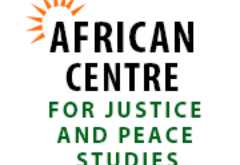(February 2011) Concurrent to the Southern Sudan referendum for self-determination and negotiations between the National Congress Party (NCP) and Sudan Peoples’ Liberation Movement (SPLM) on implementation of outstanding Comprehensive Peace Agreement (CPA) elements, intense fighting occurred in Darfur amidst a deteriorating environment for humanitarian aid. Throughout December alone, over 32,000 were displaced from the Khor Abeche region, which extends from South of El Fashir in North Darfur to outside Nyala in South Darfur. The devastation has largely been rendered invisible: despite the magnitude of devastation and suffering in Darfur, international attention has largely shifted to North/South issues, with the crisis in Darfur “de-coupled” by the international community to encourage the referendum process. Indeed, the referendum has, in many ways, exacerbated the situation in Darfur as it offered a cover for Khartoum to withdraw from Doha while simultaneously urgently pressing for a solution and refusing the mediations’ proposal, resume fighting with their Darfur Peace Agreement (DPA) partner the Sudan Liberation Army/Mini Minawi (SLA/MM), and continue implementation of the “peace from within” strategy.
Conflict in Darfur was not confined to December – January. In the past year and a half, clashes between the SAF and rebel factions have increased significantly and have been accompanied by attacks on villages. The largely inaccessible and rebel controlled Jebel Marra area was bombed and attacked by militias throughout 2010, displacing an estimated 100,000.
Humanitarian organisations also had tremendous lack of access to conflict-affected areas and IDP camps to conduct assessments and provide aid – humanitarian aid was cut off to Jebel Marra, and clashes in Kalma IDP camp over the Doha peace process in July led to aid being blocked for the better part of August and most of the IDPs deserting the camp.Blockages in access on the pretext of insecurity has been disputed by IDPs suffering from malnutrition and disease, who believe that the government themselves are the instigators of insecurity and are attempting to dismantle the camps and encourage IDP returns, an element of the government’s new Darfur strategy.
Violence has been characterised by looting and destruction of property and villages, rape, arbitrary arrests, and the killing of civilians. One incident on 2 September in Tabra, an ethnically Fur village in North Darfur, was particularly illuminative of the internecine violence that was present during the early years of the conflict.
In December, fighting reignited in the Khor Abeche region of North Darfur between the only rebel group to have signed the 2006 DPA in Abuja, the SLA/MM, and the Sudanese Armed Forces (SAF).
Download full report here.
This post is also available in: Arabic
 African Centre for Justice and Peace Studies ACJPS | المركز الافريقي لدراسات العدالة و السلام
African Centre for Justice and Peace Studies ACJPS | المركز الافريقي لدراسات العدالة و السلام



